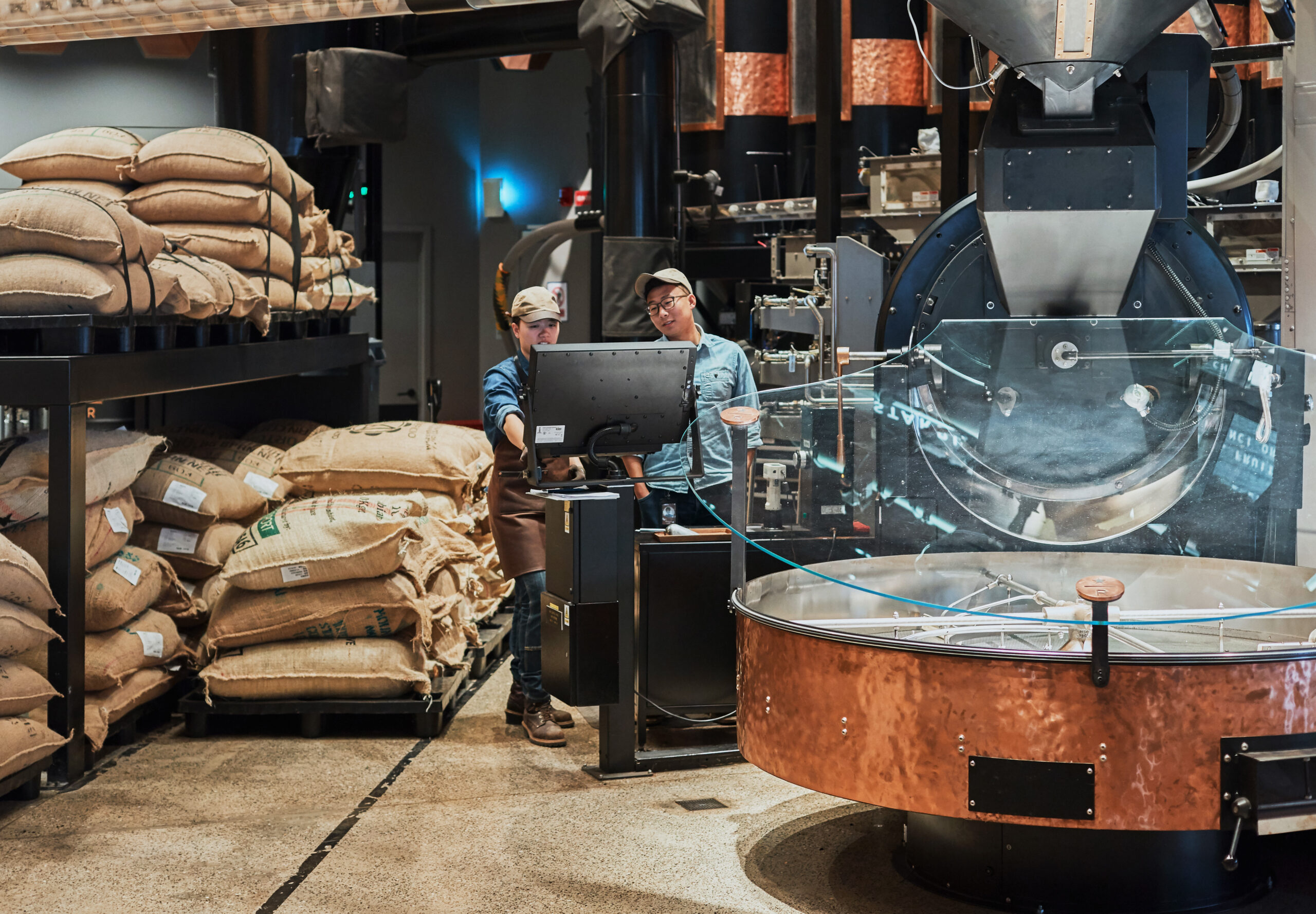While modelling has a lot of potential to improve roasting and reduce the amount of manual labour involved, it is a long way from being able to replace the work of a roaster in developing roast profiles. Even the relatively simple task of replicating a given roast profile remains challenging, and the roast automation software currently available on the market is generally not yet good enough for specialty roasters, Mark says.
‘I’m still surprised we don’t have that kind of software. I think it’s a combination of thermocouples being too slow to respond and the fact that there’s so much thermal inertia in a roaster — so, if you change the temperature set point, it can take 30 seconds for the roaster to respond,’ he explains. ‘That’s why infrared temperature sensors are going to be amazing, because it’s basically an instantaneous reading of the bean temperature.’
 Roasting software has the potential to allow roasters to operate semi autonomously by replicating roast profiles.
Roasting software has the potential to allow roasters to operate semi autonomously by replicating roast profiles.
Helping roasters develop new profiles will require much more complex models than the ones required for simple roasting automation. One of the biggest challenges will be linking models to sensory outcomes, which are much more difficult to measure than physical parameters such as colour or moisture loss.
‘Linking physical and chemical properties with sensory data is really difficult,’ Mark says. Even if you could model heat transfer during roasting accurately, linking that to chemical changes that affect flavour is another huge task. The physical changes to the bean during roasting change the way the coffee grinds and extracts, which further affects flavour. Sensory data, meanwhile, is expensive and time-consuming to gather.
‘It’s difficult to get a model that describes everything, because all [these factors] are related, but people spend a lot of time focused on one part of it and don’t think about how there’s a logical process from A to B to C,’ Mark says. ‘It’s even more complicated because no two beans are ever the same, but I feel like it is doable.